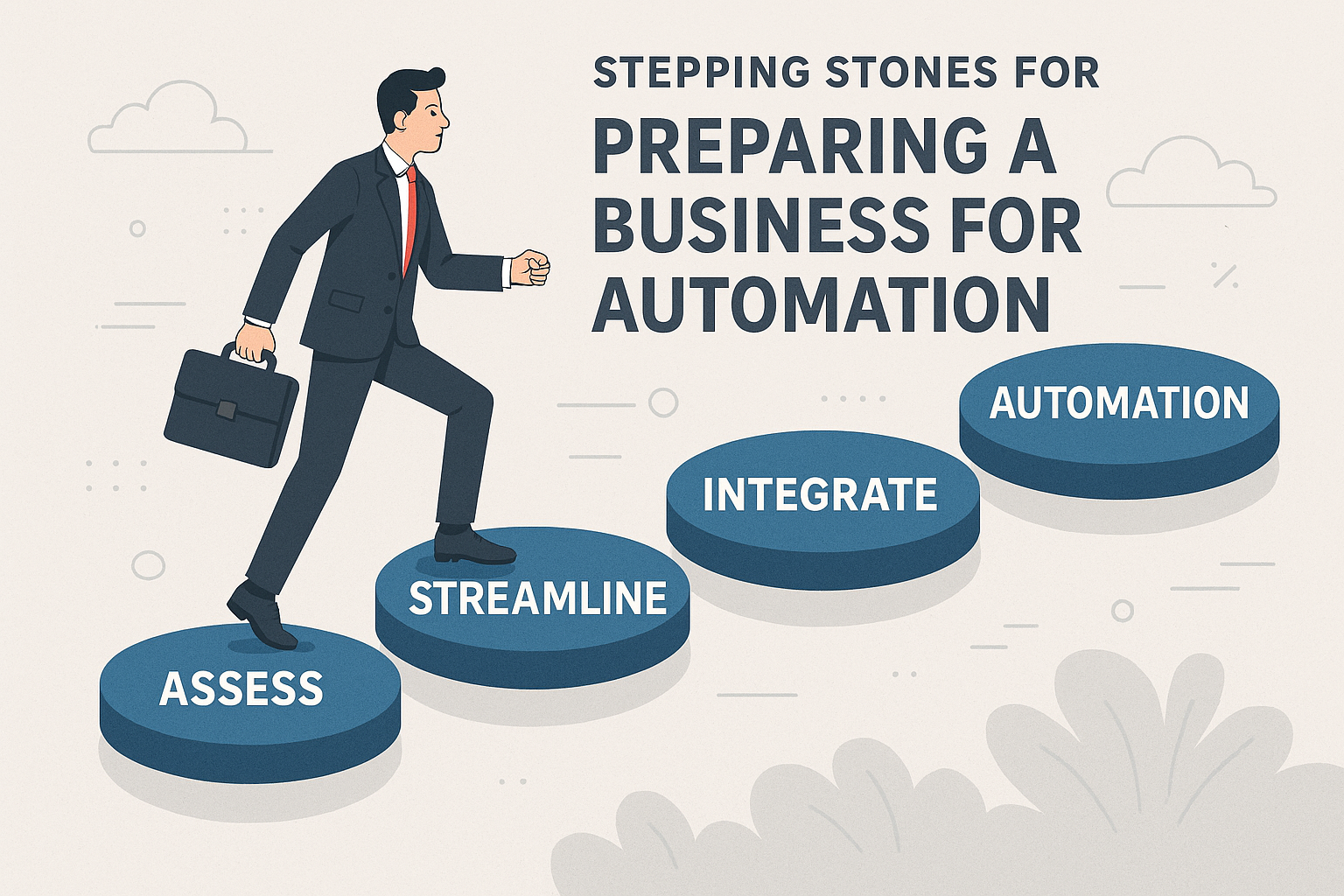
If you’re thinking about making your business more efficient through automation, you’re not alone. Automation can streamline your operations, save time, and boost productivity. Before you jump in, it’s important to lay the right groundwork. Here’s a clear, step-by-step guide to get your business processes ready for automation and make the transition as smooth as possible.
Start by really understanding how things work in your business today. Map out each process, noting who does what, in what order, and where things tend to slow down. Talk to the people who actually do these tasks every day to get their input. Their insight will help you spot issues and opportunities you might have missed.
Why automate? Maybe you want to cut down on mistakes, reduce costs, work faster, or make customers happier. Pinpointing your goals early will make it easier to figure out which processes to focus on and how to measure your success.
Automation works best when your processes are consistent and straight forward. Before bringing in any tech, tidy up your procedures. Get rid of unnecessary steps. Make sure everyone is following the same playbook and simplify wherever you can.
Good documentation is key. Write down each step, create clear instructions, and make note of any exceptions or unusual cases. This gives your automation partners and your own team a solid blueprint to work from, making the automation process much smoother.
Not everything is a good fit for automation. Look for processes that are repetitive, done often, and don’t have too many exceptions. These are usually the best places to start.
Change can be unsettling, so keep the lines of communication open. Explain why you’re automating and what the benefits will be. Involve your team in planning, training, and make time to listen to their concerns. Their buy-in and feedback will be invaluable.
Choose automation tools that suit your needs. For example, UiPath’s RPA platform is great for automating routine, rule-based tasks. Agentic automation lets smart software agents handle more complex, multi-step workflows and adapt on the fly. These tools can really boost efficiency and future-proof your operations.
It’s also smart to partner with experts who know this landscape inside and out.
Working with a specialist like ETT can make all the difference. Here’s how ETT can support you:
· Expert Advice: ETT can help you spot the best opportunities for automation, so you get the biggest payoff with the least hassle.
· Custom Solutions: Their team will recommend and set up automation and AI tools that fit your unique needs that work well with what you already have.
· Change Management: ETT can help your staff get comfortable with the changes, offering training and support every step of the way.
· Fast Implementation: With tried and tested methods, ETT can help you roll out new automated processes quickly and smoothly.
· Ongoing Support: Even after your automation is up and running, ETT sticks around to help you fine-tune and improve things overtime.
· Risk Management: ETT uses best practices to makesure your automation stays secure and compliant, from day one.
With ETT as your partner, you get an experienced guide helping you from initial planning all the way through to long term success.
Think about how your new automation tools will work with your existing systems. Make sure your data is accurate, secure and watch out for any integration hiccups.
Don’t try to automate everything at once. Begin with a pilot project. See how it goes, gather feedback, and make tweaks before rolling it out more widely.
Set up clear roles & responsibilities to manage your automation program and keep things running smoothly. Automation isn’t a one and done deal. Keep reviewing and updating your automated processes to stay ahead as your business grows.
Getting your business ready for automation is a journey, not a sprint. By following these steps and working with a partner like ETT, you’re setting yourself up for lasting success. Keep your team in the loop, stay open to feedback, and look at automation as a chance to keep getting better at what you do.